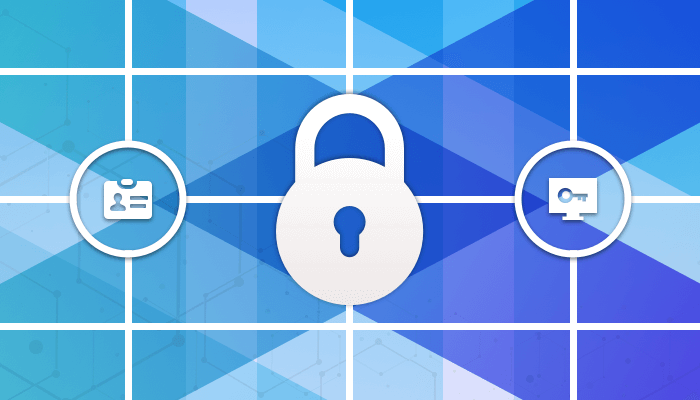What is The Difference Between IAM and PAM?
Nowadays, access management systems have become…
… a powerful tool to secure organization assets.
These tools also help in safeguarding the digital identity associated with the organization.
Lots of people and business professionals use Identity and Access Management (IAM) and Privileged Access Management (PAM) interchangeably.
But, there is a notable difference between both these terms.
If you want to comprehend the difference between these two terminologies, this blog is for you.
What is Identity and Access Management (IAM)?
Identity and Access Management (IAM) is a collective term that defines a framework or discipline of techniques, policies, rights, and processes to manage digital identities.
It is a state-of-the-art system that helps provide the right resource to the right individual as per their need.
It helps a company to set up privileges, roles, security policies, access controls, and manage employee or user identities.
Some widespread IAM vendors are SailPoint, Auth0, Cyberark, Okta, ForgeRock, Saviynt, etc.
What is Privileged Access Management (PAM)?
Privileged Access Management is a subset of IAM that renders security through different strategies & technologies to exert control over privileged access & permissions.
It deals with the authority to on organization’s device, network, or application.
PAM explicitly focuses on managing access to an organization’s critical infrastructure, services, and resources.
Most PAMs are built on top of IAM, leveraging the benefits of IAM.
Some widespread PAM vendors are BeyondTrust Privileged Remote Access, ARCON Privileged Access Management, Centrify Privileged Access Service, Foxpass Privileged Access Management, etc.
IAM vs PAM:
IAM:
- IAM is a superset of PAM
- Here the focus is on digital identity management
- IAM solutions help control the everyday access of employees and keep a check on cyber threats
- IAM is an all-rounder solution for organization’s security and identity management
- IAM automates user provisioning, de-provisioning, and on-boarding processes
- IAM works on multiple security principles and strategies
- It fosters policy automation, monitors security threats, and protects employees’ digital identities
- Here the access control is on both employees and assets
- IAM is reliable and flexible
- IAM allows organizations to define who has access to what resources within the organization’s ecosystem
- Since IAM is a centralized security solution, it caters to more visibility over secure assets
PAM:
- PAM is a subset of IAM
- Here the focus is on privilege-based accessibility
- PAM exclusively focuses on securing privileged accounts
- PAM specifically caters to those who need highly secure access to databases, backend systems, and other resources storing highly-sensitive information
- It minimizes administrative overhead for secure authentication and strengthens privileged access
- PAM particularly works on the principle of least privilege
- It enables different privileged access management strategies for secure authentication
- Here the access control is on assets rather than users and employees
- PAM is more reliable but very less flexible
- PAM pushes a step further & defines which employee has access to what resources and to what extent
- PAM is not centralized and facilitates secure access to resources and organization assets
Which Should Come First: IAM or PAM?
Although both the domains are essential from the security perspective, it is not a race between a rabbit and a tortoise.
But in general, the PAM should come first.
It is because privilege comes first when we set up a system in terms of security for the first time.
Then, based on the privileged account, the admin set-ups the role-based accounts that exist on other employee systems.
To protect the overall identity and resources associated with these identities, organizations should first implement PAM followed by IAM implementation.
So, the best and steady-state to secure the overall organization’s network is to make them work in close tandem.
Different Scopes & Risks:
We can consider IAM as the front door security solution, whereas PAM as the office’s back door that is connected to the server room.
Attack surfaces in IAM are mostly the authentication interfaces through attacks like credential stuffing, brute force attacks, and identity theft associated with the entire system.
Attack surfaces in PAM relate to data contamination, vulnerable port attacks, stealing sensitive organizational resources & information, etc.
PAM secures the bulk download of databases, keeps secure log files, and maintains encrypted databases and organizational resources.
IAM, on the other hand, is responsible for hashing passwords, generating passwordless authentications (link-based, social login, etc.), and managing employee onboarding and offboarding identities through automation.
Target Users for IAM & PAM Solutions:
Although both IAM and PAM help in organization’s security, their end-user differs. In-general , IAM focuses on all security aspects like authentication, authorization, identity, & thus, the end-users are mostly the organization’s employees.
PAM, on the other hand, minimizes administrative overheads with secure authentication by strengthening privileged access for securing resources and admin accounts.
It delivers security for admins, senior executives, security officers & privileged users by specifying and regulating the administrative role of admin users.
Conclusion:
Both IAM and PAM have their own benefits and challenges.
Although, most companies prefer to go with IAM because it caters to a wide variety of solutions and security features.
Both these tools remain aligned to various corporate and industry-level compliances and enforce different authentication mechanisms also.
It entirely depends on the organization requirements whether to choose IAM or PAM.
Secure your organization right now – Start 15 Days Free Trial

